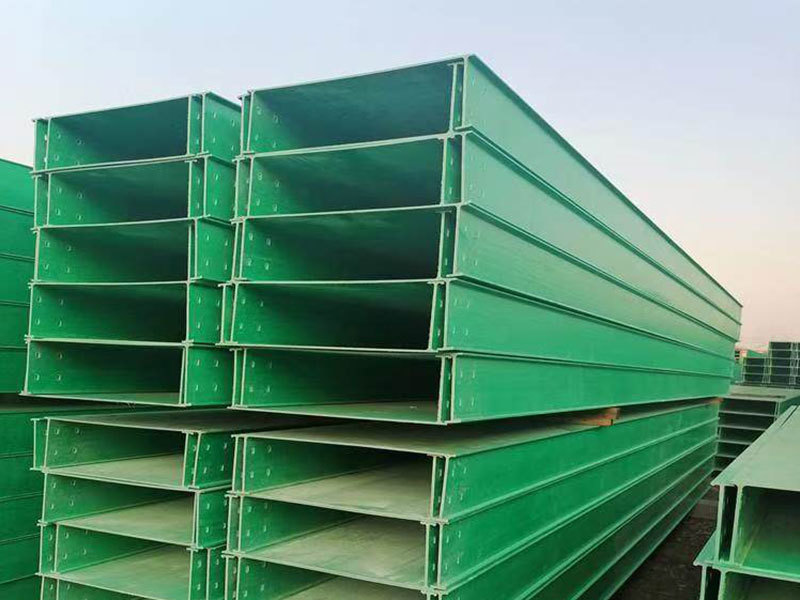Where can FRP cable racks be used?

Where can FRP Cable Racks be Used?
Fiber Reinforced Polymer (FRP) cable racks are increasingly becoming a popular choice for various applications across multiple industries. These racks are made from a composite material that combines fibers, typically glass or carbon, with a polymer matrix. This unique composition provides several advantages, such as high strength-to-weight ratio, corrosion resistance, and low maintenance requirements. In this article, we will explore the diverse applications of FRP cable racks, highlighting their benefits and the industries that can significantly benefit from their use.
One of the primary applications of FRP cable racks is in the electrical and telecommunications sectors. In these industries, cables need to be organized and secured to ensure efficient operation and safety. FRP cable racks offer a lightweight yet robust solution that can support a significant amount of weight without sagging or bending. Their corrosion-resistant properties make them ideal for environments where moisture and chemicals are present, such as power plants and data centers. Additionally, FRP racks can withstand extreme temperatures, making them suitable for both indoor and outdoor installations.
Another critical area where FRP cable racks are utilized is in the construction industry. As buildings become more complex, the need for organized cable management systems has grown. FRP cable racks can be installed in various locations within a building, including basements, rooftops, and service tunnels. Their non-conductive nature makes them safe for use in electrical applications, reducing the risk of short circuits or electrical fires. Moreover, the lightweight design of FRP racks makes them easy to transport and install, reducing labor costs and installation time.
The oil and gas industry is another sector that benefits from the use of FRP cable racks. In offshore drilling platforms and refineries, where harsh environmental conditions are the norm, FRP cable racks provide a reliable solution for cable management. The racks can withstand exposure to saltwater, chemicals, and extreme weather, ensuring that critical cables remain protected and organized. Furthermore, the lightweight nature of FRP racks reduces the overall weight of installations, which is a significant consideration in offshore applications where weight limitations are strict.
In addition to these industries, FRP cable racks find applications in the transportation sector, particularly in railways and airports. The need for effective cable management systems is essential in these environments to ensure safety and efficiency. FRP racks can be used to support signaling cables, communication lines, and power cables, helping to maintain a well-organized infrastructure. Their resistance to corrosion and environmental degradation makes them ideal for use in outdoor settings, where exposure to the elements can quickly deteriorate other materials.
The renewable energy sector is also witnessing an increasing use of FRP cable racks. With the rise of solar and wind energy installations, there is a growing demand for efficient cable management solutions. FRP racks can be employed to organize and secure cables in solar farms and wind turbine installations, ensuring that they remain protected from environmental hazards. The lightweight design of FRP racks makes them easy to handle and install, which is crucial in large-scale renewable energy projects.
Furthermore, FRP cable racks are being adopted in the water and wastewater treatment industries. In these facilities, cables must be protected from moisture and corrosive substances. FRP racks offer an ideal solution, as they are resistant to water and chemical exposure. This ensures the longevity of cable installations and minimizes maintenance requirements. The use of FRP racks in these environments contributes to the overall efficiency and reliability of water treatment processes.
Another area where FRP cable racks can be effectively used is in the mining industry. Mining operations often require extensive electrical and communication systems to ensure safety and productivity. FRP racks can be employed to manage cables in harsh environments, where exposure to dust, moisture, and chemicals is prevalent. Their durability and resistance to corrosion make them suitable for underground and surface mining operations, helping to keep cables organized and secure.
In conclusion, FRP cable racks are versatile solutions that can be used across various industries, including electrical and telecommunications, construction, oil and gas, transportation, renewable energy, water and wastewater treatment, and mining. Their unique properties, such as lightweight design, corrosion resistance, and low maintenance requirements, make them an attractive choice for cable management. As industries continue to evolve and seek efficient solutions for cable organization, the demand for FRP cable racks is expected to grow. By adopting these innovative products, companies can enhance their operational efficiency, ensure safety, and reduce maintenance costs, paving the way for a more sustainable future.
TAG:
Previous:
Related Posts
How to Select the Right FRP Grating







